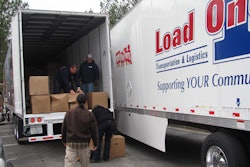
Buy a new truck.
ACT Research President and Senior Analyst Kenny Vieth says about one-third of all active trucks in the U.S. got an average of at least 7.5 miles per gallon at the end of last year, while nearly half got between 6 and 6.3.
“If I buy a new truck today, it’s going to have about 14 percent better fuel economy than the average truck in the fleet,” he says. “Fuel economy should be something that incents people to want to buy new trucks.”
The fuel economy numbers of more than half the truck population are significantly lower than what today’s trucks are capable of, but low freight rates and taxes associated with buying new equipment make upgrading a far less enticing proposition.
The American Trucking Association Truck Loads Index showed growth of 1 percent in 2015 and only .1 percent last year.
“We went seven quarters with virtually no freight growth,” Vieth adds.
Freight growth was hindered by low rates, driven down by too many trucks fighting over too little cargo. By the end of 2015, Vieth says there were about 100,000 too many truck on the road – about 6 percent more trucks than were needed.
Fuel economy numbers and the truck population aren’t the only figures to swell. Truck prices have grown by about $30,000 since EPA 2004, which Vieth says means an additional $3,600 in federal excise taxes (FET) and another $2,000 in added state tax.
That’s not exactly an incentive to buy more efficient equipment. With diesel below $3 per gallon, there’s no sexy reason to pile on an extra 12 (+/-) percent of the purchase price in taxes when you’re actually saving money trudging along at 6 mpg.
If you can make a business case that buying a new truck can save you $12,000 annually in diesel, that’s attractive. But if you’re paying about that much in taxes alone, adding a full year of payments just to cover tax isn’t going to feel too great in your ROI calculator.
To encourage adoption of fuel efficient trucks, a Vieth says “carrot based approach is needed.” We kind of have a carrot-and-stick based approach now. Fleets are drawn to the carrot (fuel efficiency) and beaten with the stick (FET).
Vieth proposes rewarding new truck buyers by eliminating the FET as an offset to buying more efficient trucks that are better for the environment; using the carrot to encourage good behavior.
Lawmakers aren’t likely willing to give up such a chunk of money, so Vieth proposes replacing the FET with a boost – abut 12 cents – in diesel taxes.
More fuel efficient truck will use less fuel and pay less of the increased tax. The trucks most penalized will be the ones getting the fewest miles per gallon (the stick) and should be encouraged to upgrade (the carrot, again), which will drag that national MPG average up from around 6.
With the Department of Energy throwing hundreds of millions of dollars into its SuperTruck initiatives, it makes sense to have a consumer-based infrastructure that supports wide adaptation of those technologies.
EPA freight efficiency targets for new trucks are all well and good but given the average age of the truck population, it could be almost 2027 before the majority of trucks on the road are even EPA 2017 compliant.
If the goal is to get more fuel efficient trucks on the road, heaping taxes on them that are greater than the savings they may generate during their lifecycle isn’t the way to go about it.













